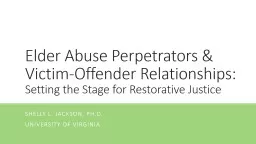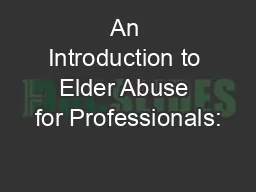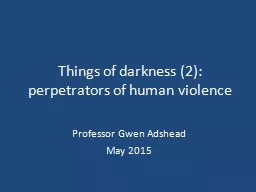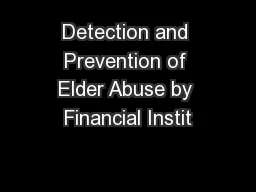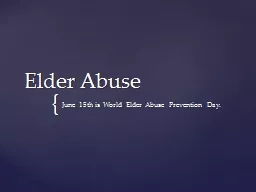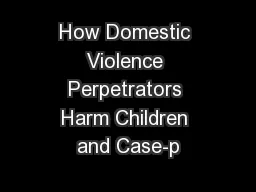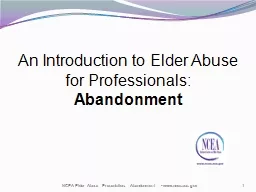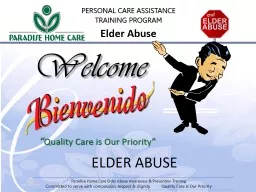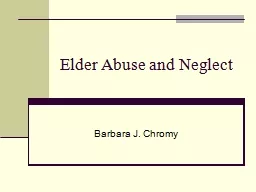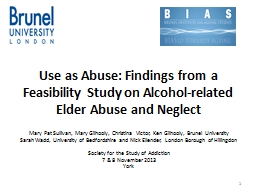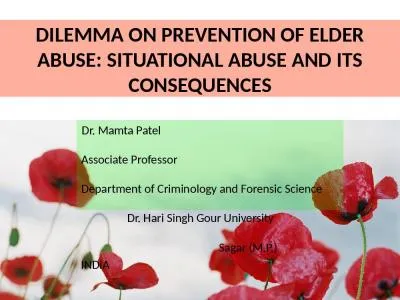PPT-Elder Abuse Perpetrators & Victim-Offender Relationships:
Author : evelyn | Published Date : 2022-06-11
Setting the Stage for Restorative Justice Shelly L Jackson PhD University of Virginia Research Child Abuse Focus on the offenders parents 0 3 programs Intimate
Presentation Embed Code
Download Presentation
Download Presentation The PPT/PDF document "Elder Abuse Perpetrators & Victim-Of..." is the property of its rightful owner. Permission is granted to download and print the materials on this website for personal, non-commercial use only, and to display it on your personal computer provided you do not modify the materials and that you retain all copyright notices contained in the materials. By downloading content from our website, you accept the terms of this agreement.
Elder Abuse Perpetrators & Victim-Offender Relationships:: Transcript
Download Rules Of Document
"Elder Abuse Perpetrators & Victim-Offender Relationships:"The content belongs to its owner. You may download and print it for personal use, without modification, and keep all copyright notices. By downloading, you agree to these terms.
Related Documents

